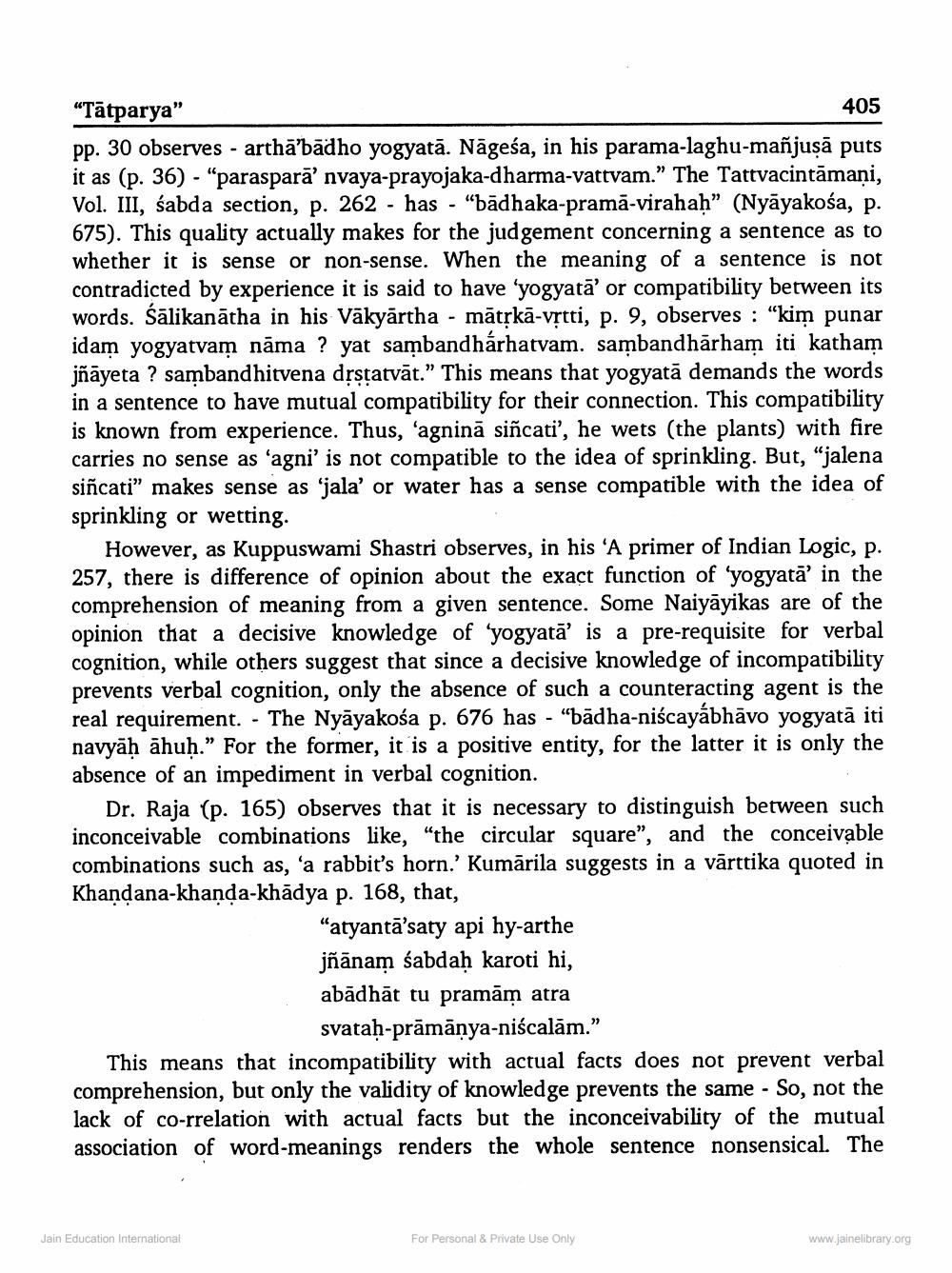________________
“Tātparya"
405 pp. 30 observes - arthābādho yogyatā. Nāgeśa, in his parama-laghu-mañjuşā puts it as (p. 36) - "parasparā' nvaya-prayojaka-dharma-vattvam.” The Tattvacintamani, Vol. III, sabda section, p. 262 - has - "bādhaka-pramā-virahah” (Nyāyakośa, 675). This quality actually makes for the judgement concerning a sentence as to whether it is sense or non-sense. When the meaning of a sentence is not contradicted by experience it is said to have 'yogyatā' or compatibility between its words. Sālikanātha in his Väkyārtha - mātrkā-vrtti, p. 9, observes : “kim punar idam yogyatvam nāma ? yat sambandhárhatvam. sambandhārham iti katham jñāyeta ? sambandhitvena drstatvāt.” This means that yogyatā demands the words in a sentence to have mutual compatibility for their connection. This compatibility is known from experience. Thus, 'agninā siñcati', he wets (the plants) with fire carries no sense as 'agni' is not compatible to the idea of sprinkling. But, "jalena siñcati” makes sense as 'jala' or water has a sense compatible with the idea of sprinkling or wetting
However, as Kuppuswami Shastri observes, in his 'A primer of Indian Logic, p. 257, there is difference of opinion about the exact function of 'yogyatā' in the comprehension of meaning from a given sentence. Some Naiyāyikas are of the opinion that a decisive knowledge of 'yogyatā’ is a pre-requisite for verbal cognition, while others suggest that since a decisive knowledge of incompatibility prevents verbal cognition, only the absence of such a counteracting agent is the real requirement. - The Nyāyakośa p. 676 has - “bādha-niscayábhāvo yogyatā iti navyāḥ āhuḥ.” For the former, it is a positive entity, for the latter it is only the absence of an impediment in verbal cognition.
Dr. Raja (p. 165) observes that it is necessary to distinguish between such inconceivable combinations like, "the circular square", and the conceivable combinations such as, 'a rabbit's horn.' Kumārila suggests in a vārttika quoted in Khandana-khanda-khādya p. 168, that,
"atyantā’saty api hy-arthe jñānam śabdaḥ karoti hi, abādhāt tu pramām atra
svataḥ-prāmānya-niścalām.” This means that incompatibility with actual facts does not prevent verbal comprehension, but only the validity of knowledge prevents the same lack of co-rrelation with actual facts but the inconceivability of the mutual association of word-meanings renders the whole sentence nonsensical. The
Jain Education International
For Personal & Private Use Only
www.jainelibrary.org




